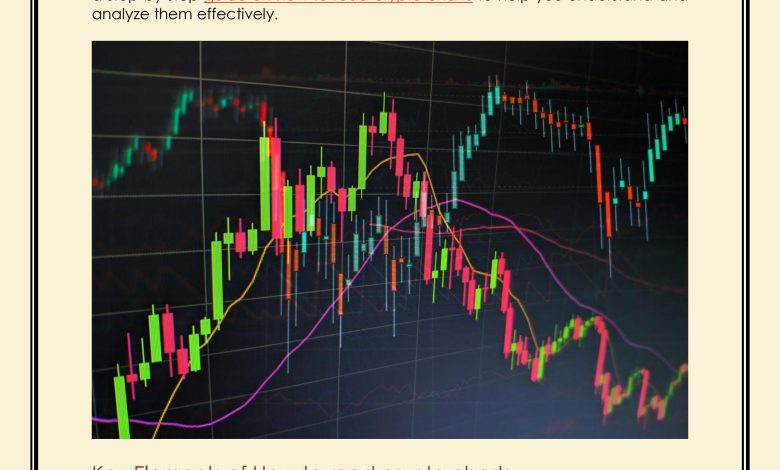How to Read and Interpret Crypto Market Data

- Understanding the Basics of Crypto Market Data
- Analyzing Price Charts and Trends
- Interpreting Trading Volume and Liquidity
- Utilizing Technical Analysis Tools
- Identifying Market Sentiment and News Impact
- Implementing Risk Management Strategies
Understanding the Basics of Crypto Market Data
Crypto market data is essential for anyone looking to understand the dynamics of the cryptocurrency market. By analyzing this data, investors can make informed decisions about buying, selling, or holding their digital assets. To interpret crypto market data accurately, it is crucial to understand the basics of how this information is presented and what it represents.
One of the key components of crypto market data is the price of a particular cryptocurrency. This price is typically quoted in relation to a fiat currency, such as the US dollar or the euro. It is important to note that cryptocurrency prices can be highly volatile and can change rapidly in response to market conditions.
Another important aspect of crypto market data is trading volume. Trading volume refers to the total number of units of a cryptocurrency that have been traded within a specific time frame, such as 24 hours. High trading volume can indicate increased market activity and liquidity, while low trading volume may suggest a lack of interest in a particular cryptocurrency.
Market capitalization is also a key metric to consider when analyzing crypto market data. Market capitalization is calculated by multiplying the current price of a cryptocurrency by its total circulating supply. This metric provides an indication of the overall value of a cryptocurrency and can help investors gauge its relative size and importance in the market.
Understanding these basic concepts of crypto market data is essential for anyone looking to navigate the world of cryptocurrency investing. By keeping a close eye on price movements, trading volume, and market capitalization, investors can gain valuable insights into the behavior of different cryptocurrencies and make more informed decisions about their investment strategies.
Analyzing Price Charts and Trends
When analyzing price charts and trends in the crypto market, it is essential to look for patterns and indicators that can help predict future price movements. One common technique is to use technical analysis, which involves studying historical price data to identify trends and make informed trading decisions.
Technical analysts often use tools such as moving averages, support and resistance levels, and chart patterns to interpret market data. By analyzing these factors, traders can gain insights into the market sentiment and potential price direction.
It is also crucial to pay attention to volume, as it can provide valuable information about the strength of a trend. High volume typically confirms the validity of a price movement, while low volume may indicate a lack of interest from traders.
Additionally, keeping an eye on market news and events that could impact the price of cryptocurrencies is essential. Factors such as regulatory developments, technological advancements, and market sentiment can all influence price movements in the crypto market.
Interpreting Trading Volume and Liquidity
When analyzing crypto market data, it is crucial to understand how to interpret trading volume and liquidity. These two factors play a significant role in determining the health of a market and can provide valuable insights for traders and investors.
Trading volume refers to the total number of assets that are bought and sold within a given period. High trading volume typically indicates market activity and interest from market participants. On the other hand, low trading volume may suggest market stagnation or lack of interest in a particular asset.
Liquidity, on the other hand, refers to how easily an asset can be bought or sold without causing a significant change in its price. Assets with high liquidity are typically easier to trade and tend to have tighter spreads, while assets with low liquidity may experience price volatility and slippage.
Utilizing Technical Analysis Tools
When it comes to analyzing crypto market data, utilizing technical analysis tools can be incredibly helpful. These tools enable traders to identify trends, patterns, and indicators that can help them make more informed decisions. Some of the most commonly used technical analysis tools in the crypto market include moving averages, relative strength index (RSI), and Bollinger Bands.
Moving averages are used to determine the average price of a cryptocurrency over a specific period of time. Traders often use moving averages to identify trends and potential reversals in the market. The relative strength index (RSI) is a momentum oscillator that measures the speed and change of price movements. Traders use the RSI to determine whether a cryptocurrency is overbought or oversold.
Bollinger Bands are another popular technical analysis tool that helps traders identify potential breakouts and reversals in the market. These bands consist of a moving average line and two standard deviation lines above and below it. When the price of a cryptocurrency touches or crosses the outer bands, it can indicate a potential change in trend.
By utilizing these technical analysis tools, traders can gain a better understanding of the crypto market and make more informed trading decisions. It’s important to remember that technical analysis is just one aspect of market analysis, and it should be used in conjunction with other methods such as fundamental analysis and market sentiment analysis.
Identifying Market Sentiment and News Impact
When it comes to interpreting crypto market data, it is crucial to understand market sentiment and the impact of news on prices. Market sentiment refers to the overall feeling or attitude of traders and investors towards a particular cryptocurrency. This sentiment can greatly influence price movements and trading volumes.
One way to gauge market sentiment is by monitoring social media platforms, forums, and news outlets for discussions and opinions about specific cryptocurrencies. Positive news such as partnerships, technological advancements, or regulatory approvals can lead to a bullish sentiment, driving prices higher. Conversely, negative news like security breaches, regulatory crackdowns, or market manipulation can create a bearish sentiment, causing prices to drop.
It is essential to stay informed about the latest news and developments in the crypto space to anticipate potential price movements. By analyzing how news events impact market sentiment, traders can make more informed decisions about when to buy or sell cryptocurrencies.
Implementing Risk Management Strategies
One crucial aspect of navigating the volatile world of cryptocurrency markets is implementing effective risk management strategies. By carefully analyzing market data and trends, investors can make informed decisions to mitigate potential losses and maximize profits. Here are some key strategies to consider:
- **Diversification:** One of the most fundamental risk management techniques is diversifying your investment portfolio. By spreading your investments across different cryptocurrencies, you can reduce the impact of a single asset’s poor performance on your overall portfolio.
- **Stop-loss Orders:** Setting stop-loss orders can help protect your investments by automatically selling a cryptocurrency when it reaches a predetermined price. This can help limit your losses in case of a sudden market downturn.
- **Risk Assessment:** Conducting a thorough risk assessment before making any investment decisions is essential. Consider factors such as market volatility, regulatory developments, and technological risks to gauge the potential risks associated with a particular cryptocurrency.
- **Hedging:** Utilizing hedging strategies, such as options or futures contracts, can help offset potential losses in your portfolio. By taking opposite positions in related assets, you can protect yourself against adverse market movements.
- **Stay Informed:** Keeping up to date with the latest market news and developments is crucial for effective risk management. By staying informed about industry trends, regulatory changes, and technological advancements, you can make more informed investment decisions.
By incorporating these risk management strategies into your investment approach, you can navigate the complex and unpredictable world of cryptocurrency markets with greater confidence and resilience. Remember that no strategy can guarantee success, but by being proactive and diligent in your risk management efforts, you can better position yourself to weather market fluctuations and achieve your investment goals.






